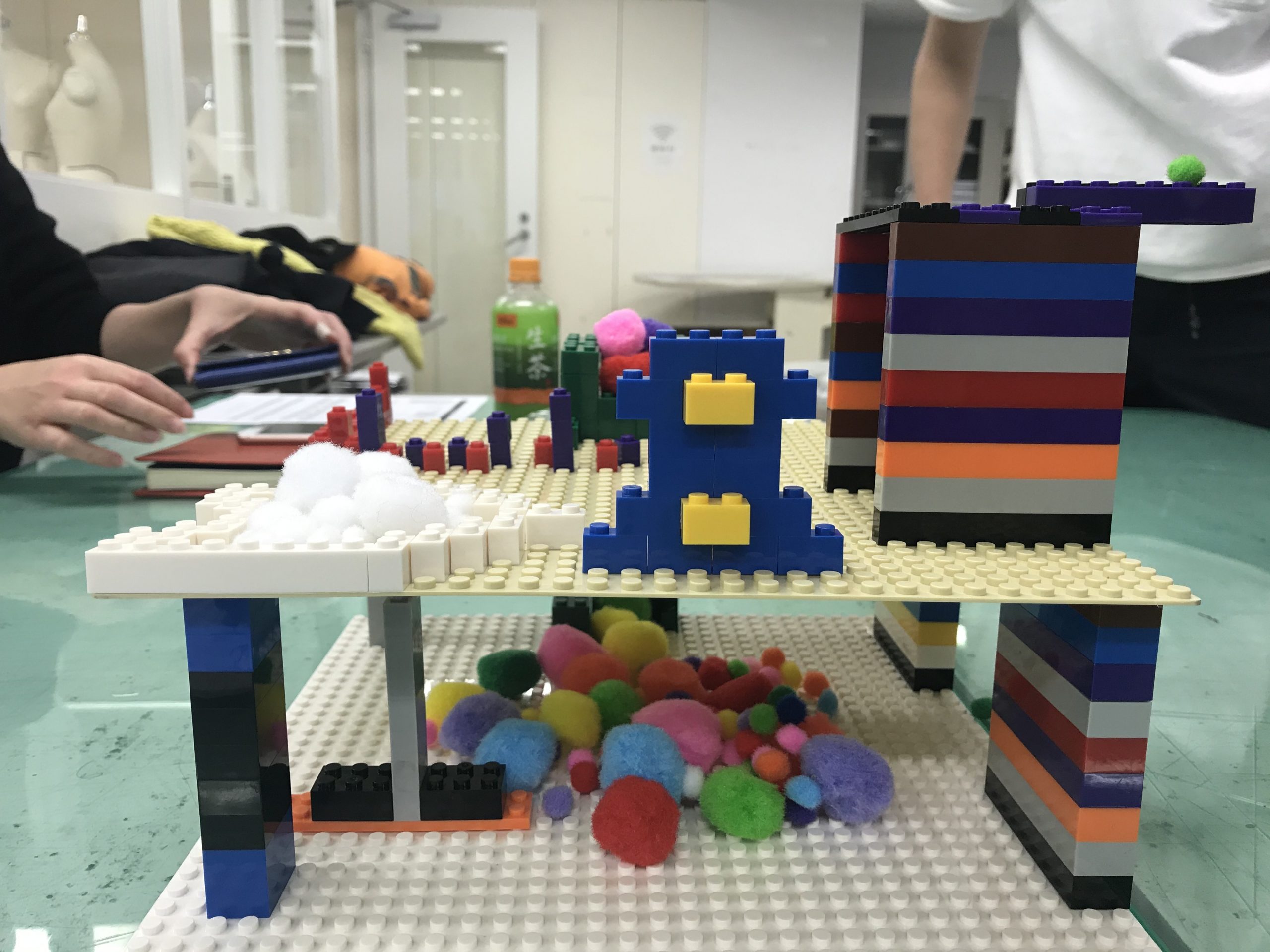Collaborating and Building Futures at VANTAN DESIGN INSTITUTE, Tokyo

On January 11, faculty from Parsons AAS design programs each presented workshops related to their field of work with members of the Vantan Design Institute in Tokyo, Japan, as part of a renewed and ongoing partnership between the two institutions. Nadia Elrokhsy, Associate Professor of Ecological Design and current director of the AAS in Interior Design program, facilitated a futuring workshop on retail design. The workshop uses strategic design methodology and tools developed over several years with Nadia’s former MFA in Transdisciplinary Design research assistants Eulani Labay, Katherine Fisher, and Juliana Chohfi. It models how designers can facilitate productive conversations with people around issues of resilience in a disaster prone climate emergency era.
Nadia Elrokhsy’s Break for Play exercise begins with a series of 5″ x7″ cards used to prompt creative discussions around resiliency. Groups of three or four, organized around tables equipped with Lego and other tools of play, then design-storm solutions for a given context, in this case, Tokyo in the year 2050. The specific outcomes of the Vantan Design Institute workshop showcase a range of ideas that represent new ways of material resource reuse of all kinds in a pop-up retail setting for Tokyo 2050.
A designer’s role is to assist in the planning of future conditions. The methodology and workshop tools that Nadia utilizes are designed to engage multiple stakeholders from a range of ages and backgrounds. As she points out, in professional practice, this kind of collaborative planning is referred to as the Pre-Design phase of a project. However, these active discussions are design by design and help pre-position a project before it is developed and environments constructed to offer greater value for the users. Nadia helps her interior design students see that facilitating such early conversations about distant futures enables a design team to imagine and plan, with the forethought, for conditions to adapt and evolve toward the users’ desired distant future over time.